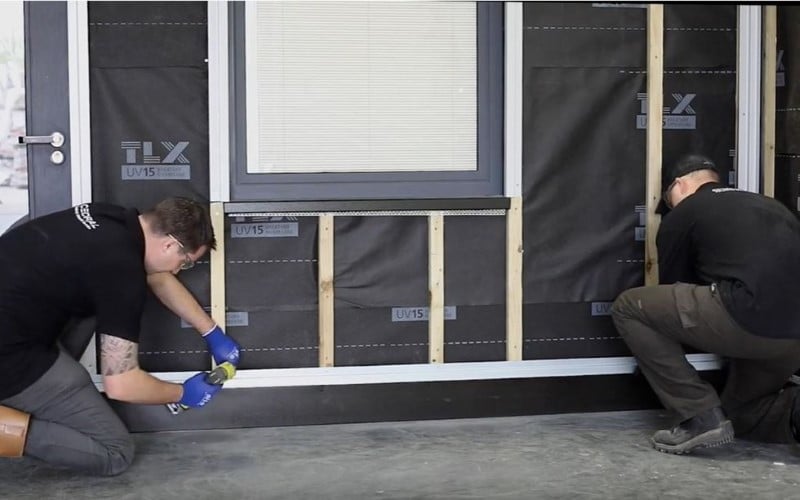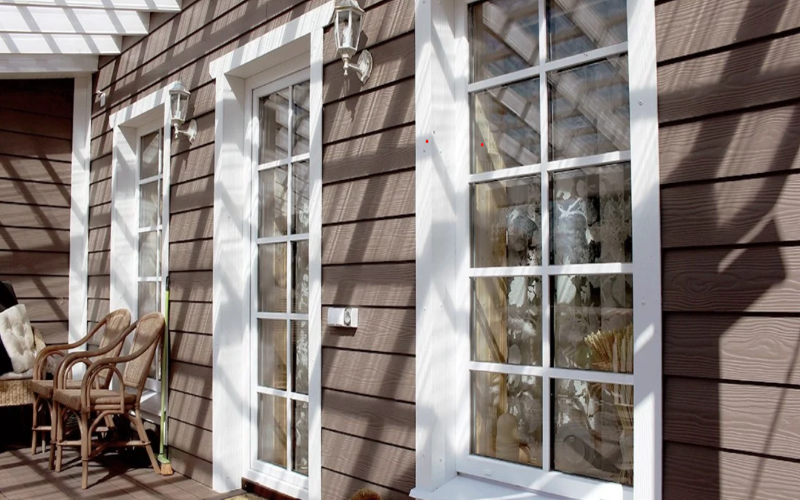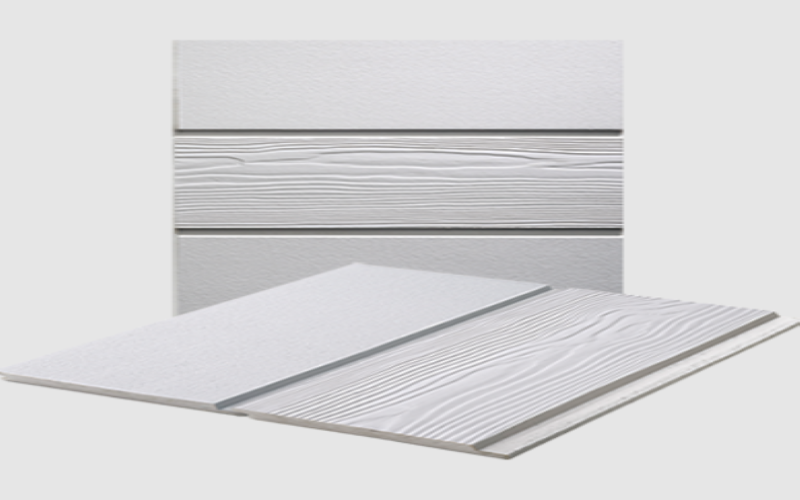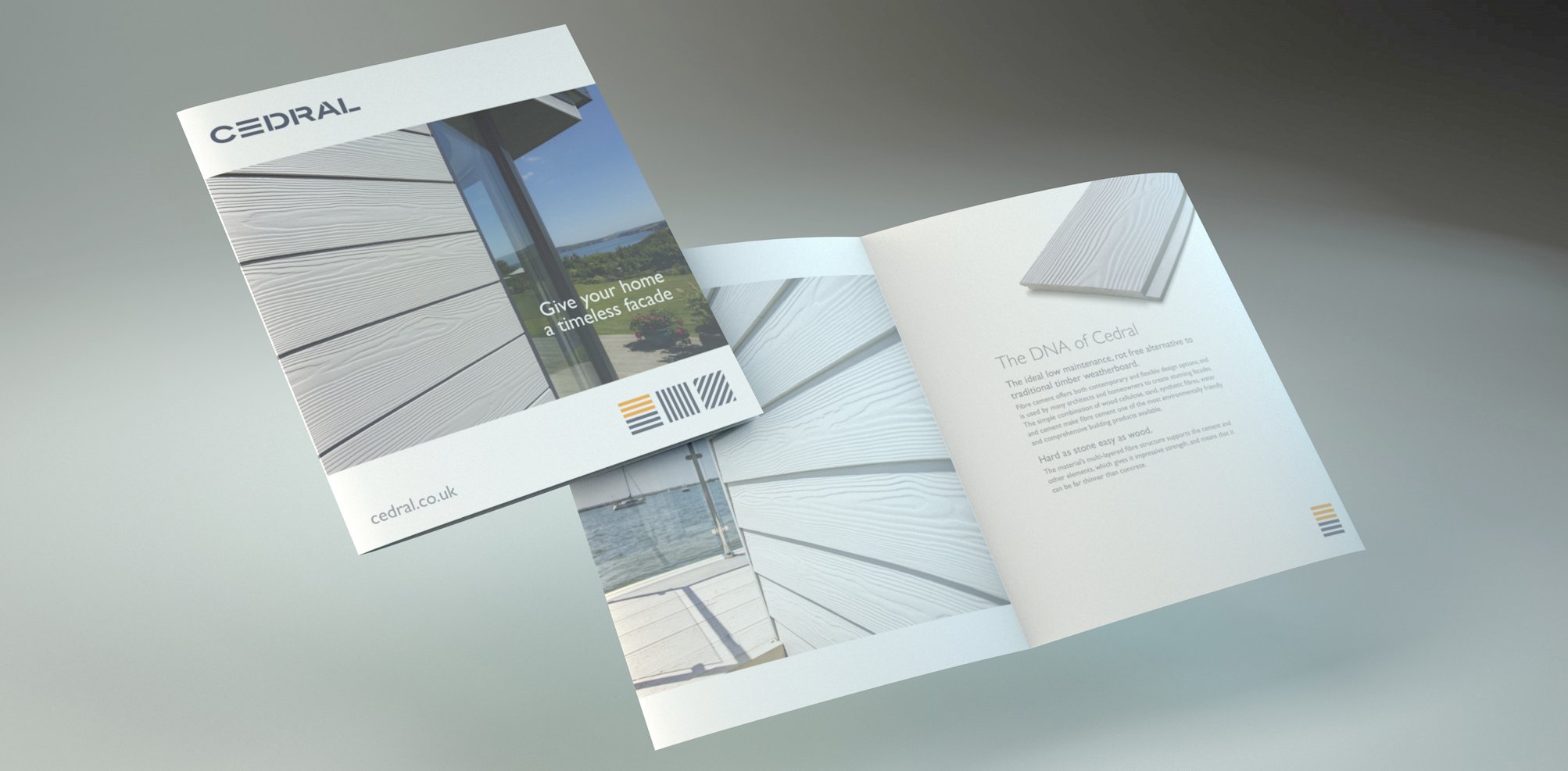Did you know you can fit weatherboards horizontally, but also vertically on your facade? In this article, you can read more about the benefits of both options, but we also zoom in on the advantages of fibre-cement facade cladding compared to wood.

The difference between horizontal and vertical cladding
Facades often get an extra layer of protection. Weatherboards are fixed on battens around the home to create a protective shell to keep the weather out. The air between the sidings and the wall proper also keeps the facade dry and prevents moisture infiltrating into your home.
Now, those weatherboards can be fixed horizontally or vertically. Horizontal sidings are installed from bottom to top, with each next weatherboard covering the top of the plank underneath it, creating a cascade system to keep the rain away from the façade. Traditional homes with wooden facade cladding made use of this type of installation. Therefore, also more novel cladding boards (such as more robust and durable fibre-cement sidings) that are installed horizontally, will give your home a more traditional look.
But sidings can also be fitted vertically. The weatherboards are lined up vertically next to each other, covering the facade. These vertical lines are considered more modern, as it is a relatively new cladding style for residential homes. Vertical cladding was traditionally more used for commercial or agricultural buildings such as barns. When installing sidings vertically, vertical battens need to be installed first, then horizontal battens installed on top to which the vertical sidings then are attached. This is to ensure the flow of air.

The benefits of horizontal facade cladding
The main reason for choosing horizontal sidings is aesthetics. The horizontal lap system creates a classic, traditional look. It has been around for a very long time, but it is still very trendy and an attractive option for many. You can’t go wrong installing this evergreen on your facade.
Fitting weatherboards on a facade horizontally is easier than vertically. This makes horizontal sidings quicker to install, saving on time and money, especially if you need to pay your installer by the hour. Because being affordable and easy to install, horizontal cladding boards are a great option when you are renovating your home, or when you plan to do it yourself.

The advantages of vertical facade cladding
Also vertically fitted weatherboards are good looking. Their less common appearance catches the eye and has an elegant curb appeal. With vertical sidings you can create a unique and more modern look. Get inspired by the many contemporary examples at cedral.world.
Even though, vertical sidings are a bit more complicated and costly to fit, they remain an affordable option, especially if you take into account the lifespan of the type of weatherboards used, such as those made of durable fibre cement.
Cedral professionals gladly help you install your vertical sidings to give your home that unique modern look.

Horizontal and vertical fibre-cement cladding options from Cedral
Nowadays, wooden planks are often replaced by fibre-cement weatherboards. They are more robust and durable than wood to protect your home. Fibre cement is an innovative composite material that is impervious to rot, mould and resistant to fire. Moreover, you can choose from a smooth surface or an authentic wood-grain texture, that looks just like wood.
The Cedral fibre-cement sidings come in a wide range of factory-applied colours so that you don’t need to (re)paint your facade. Once every few years cleaning with the garden hose and a soft brush is enough to keep your façade as new for years on end. This makes fibre-cement a low-maintenance and cost-effective alternative for wood in the long run.
Cedral weatherboards can be fitted in horizontal lap style – Cedral Lap – with the top board covering the upper edge of the underlying plank. But Cedral also has an innovative tongue and groove system – Cedral Click – that can be used both horizontally as well as vertically. The interlocking boards give your facade an exceptional contemporary look.
You can also mix and match. Select horizontal sidings for your walls, for instance, combined with vertical accents on the gables or other areas on your house (e.g. annex, garage). Together with the UV-resistant colour range and the two types of surfaces, you have numerous design possibilities to make your home stand out.
Want to play around with the different colours, finishes and installations? The Cedral visualisation tool shows you the endless possibilities.
